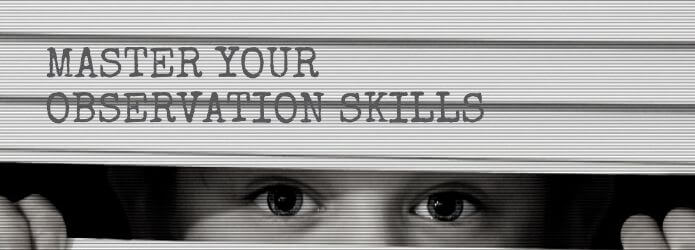|
Non-viewpoint characters have emotions too. But how do we show them without head-hopping? The answer lies in mastering observable behaviour.
What is head-hopping?
When a reader can access the internal experiences (emotions, thoughts, memories) of more than one character in a chapter or section, head-hopping is usually in play. The exception is if you’re tackling the tricky beast that is omniscient narration. It’s difficult to pull off and rarely used in contemporary commercial fiction. Here’s an example of what head-hopping looks like on the page. Jack is the viewpoint character and the narration style is third-person limited.
The pebble bounces on the water seven, eight, no, nine times. Best ever, Jack thinks.
Pete weaves through the grass and slumps into a hollow in the dune. His brother’s whoop, the arc of his arm … just like Dad’s when they played skimming stones. Before the accident. Before the world changed. He shakes the memory from his head. Dwelling on that stuff never ends well. Jack turns away from the ocean, waves and calls for Pete to come down but the crashing surf swallows his words. Notice the following:
How to enter a non-viewpoint character’s space without dropping viewpoint There will be times when you want your reader to enter the emotional and physical space of a non-viewpoint character. Mastering observable behaviour – showing us what the viewpoint character can see, and their interpretation of that behaviour – is one solution that will enable you to hold viewpoint. Here’s a recast of the Jack/Pete scene:
The pebble bounces on the water seven, eight, no, nine times. Best ever, Jack thinks.
He whoops and turns his back to the ocean. Pete’s lumbering gait is unmistakable. He weaves through the grass on the dune and slumps into a hollow, mouth set in a hard line, neck hunched into his shoulders, complexion pasty. But he’s out; the sunlight’s on his face. It’s the first time since a month of whenevers. Skimming stones was something they did with Dad. Before the accident. Before the world changed. Jack shakes the memory from his head. Dwelling on that stuff never ends well. He waves, calls for his brother to come down but the crashing surf swallows his words. Notice the following:
Mastering observation
Mastering observation enables writers to retain viewpoint but not be restricted by it. Think about how non-viewpoint characters will move in a way that reflects their internal experience, or what they will look like. Here are a few examples:
Summing up
If you’re writing in a third-person limited narration style, consider what the viewpoint character already knows, what they can observe in relation to a non-viewpoint character, and what they could infer from those observations. That will determine what they can report. What they report can still allow readers to access the internal experience of the non-viewpoint character through a back door. And while that report will be biased, it will be immersive.
Louise Harnby is a line editor, copyeditor and proofreader who specializes in working with crime, mystery, suspense and thriller writers.
She is an Advanced Professional Member of the Chartered Institute of Editing and Proofreading (CIEP), a member of ACES, a Partner Member of The Alliance of Independent Authors (ALLi), and co-hosts The Editing Podcast. Visit her business website at Louise Harnby | Fiction Editor & Proofreader, say hello on Twitter at @LouiseHarnby, connect via Facebook and LinkedIn, and check out her books and courses.
7 Comments
Louise Harnby
25/7/2020 10:10:41 pm
Cheers, John!
Reply
Margot
3/8/2020 10:11:34 am
Very helpful. Thank you.
Reply
Louise Harnby
3/8/2020 11:19:15 am
Thank you, Margot!
Reply
6/8/2020 08:45:42 am
Useful and timely. I was trying to explain head-hopping to a member of our writing group, Your article lends authority to my ramblings
Reply
Louise Harnby
6/8/2020 12:15:04 pm
Glad it helped, Cathy!
Reply
3/2/2021 06:21:44 pm
Thank you Louise. This post is helpful as I sometimes fall out of viewpoint character's POV. I'm printing it to keep as a reference. All the best!
Reply
Leave a Reply. |
BLOG ALERTSIf you'd like me to email you when a new blog post is available, sign up for blog alerts!
TESTIMONIALSDare Rogers'Louise uses her expertise to hone a story until it's razor sharp, while still allowing the author’s voice to remain dominant.'Jeff Carson'I wholeheartedly recommend her services ... Just don’t hire her when I need her.'J B Turner'Sincere thanks for a beautiful and elegant piece of work. First class.'Ayshe Gemedzhy'What makes her stand out and shine is her ability to immerse herself in your story.'Salt Publishing'A million thanks – your mark-up is perfect, as always.'CATEGORIES
All
ARCHIVES
July 2024
|
|
|
|


















 RSS Feed
RSS Feed





